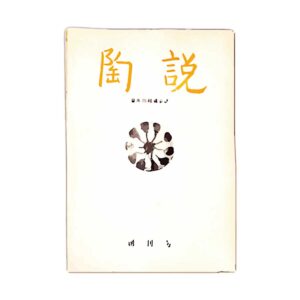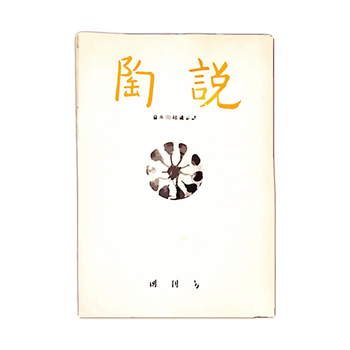
Book title. The Qianlong Period of the Qing Dynasty in China (1736-95), by Zhu (Kasatei) of Sea Salt. Six volumes. The first specialized book on ceramics in China. Volume 1 is titled “Explaining the Present,” and is divided into two sections: the present kilns in Raoju, Jiangxi Province, and 20 rules of pottery illustration. The former describes the history of porcelain firing in Jingdezhen from the beginning of the Qing Dynasty to the Qianlong period, and the latter describes the methods used in the region, with the author’s observations added. Volume 2 is titled “Explanation of the Ancient Porcelain” and is divided into two sections: “The Original Porcelain” and “Ancient Porcelain”. Volume 3 is titled “Explanation,” and is divided into two sections on the Ming kilns of Raoju and pottery making methods. The former describes the Jingdezhen kilns of the Ming dynasty, including Hongwu, Yongle, Xuande Chenghua, Jingde, Jiajing, Longqing, and Wanli, while the section on pottery making methods mainly lists articles related to Ming dynasty Jingdezhen pottery making methods, selected from various books. Volumes 4, 5, and 6 are titled “Explanatory Vessels,” and Volume 4 lists and examines vessels from prehistoric times to the end of the Six Dynasties that are mentioned in the various books. The fifth volume is entitled “The middle part,” and describes various vessels from the Tang, Song, and Yuan dynasties as in the previous volumes. Volume VI is the “middle section,” which describes Tang, Song, and Yuan vessels as in the previous volume. Volume VI is the “lower section,” which also describes Ming dynasty vessels. Jakuen, the author of “Kaiyas,” wrote, “Zhu Kasatei’s ceramic works, selected with the help of ancient sources, are well-reviewed and verified today, and although there are some indigo books, in short, the research conducted before the Song and Yuan dynasties is highly regarded. This book is a compilation of various notes collected in the Kokinshu Shuseki (Collection of Ancient and Modern Books) and Gecchigyo Yuan (Gecchigyo Yuan), and with the exception of the entries in these two books, there is little that remains. Three Japanese translations of this book were written by Kasai Inze, Aoki Kime, and Miura Chikusen, and Ozaki Shunsori discusses them in detail in “Chawan” No. 36 and below. In 1933, a translation of this book was published in Dalian, China by Yuzo Yangai.



